Nepal is renowned for its breathtaking trekking regions, many of which some Major Trekking Regions in Nepal require a Trekker’s Information Management System (TIMS) card and special permits. The Everest Region is iconic, offering stunning views of the world’s highest peak and the chance to experience Sherpa culture. The Annapurna Region, known for its diverse landscapes, includes the Annapurna Circuit and Base Camp treks, providing a rich mix of mountain scenery and cultural encounters.
The Langtang Region, close to Kathmandu, features beautiful rhododendron forests and the serene Langtang Valley. The Manaslu Region, less frequented but equally spectacular, offers a more secluded experience with views of the majestic Manaslu Peak. Lastly, in the eastern part of Nepal, the Kanchenjunga Region is a remote and rugged area known for its pristine landscapes and diverse flora and fauna.
For all these regions, trekkers need to secure TIMS cards and any additional permits required, to ensure the safety and preservation of these pristine environments.
Kanchenjunga Region
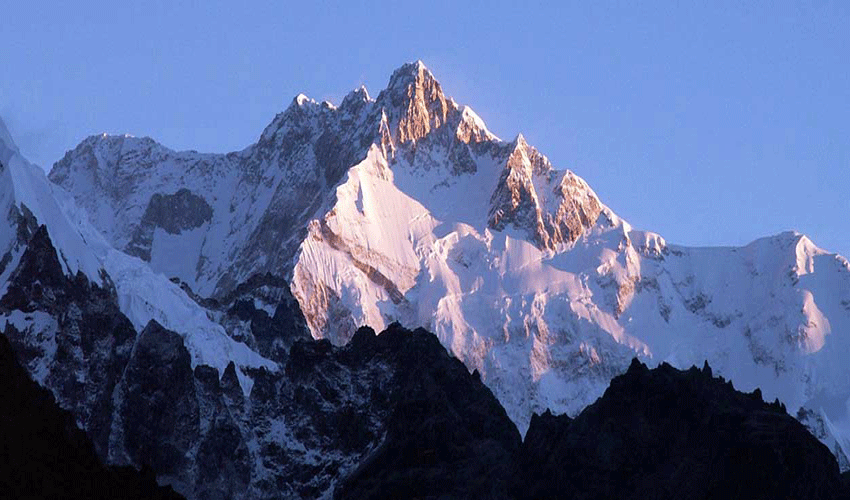
The Kanchenjunga Region in eastern Nepal is renowned for its breathtaking landscapes and pristine natural beauty. Home to the world’s third-highest peak, Mount Kanchenjunga, this region offers some of the most spectacular trekking experiences in the Himalayas. The Kanchenjunga Base Camp trek is a highlight, allowing trekkers to immerse themselves in the diverse terrain that ranges from lush subtropical forests to alpine meadows and glacial valleys.
The trek usually begins from the town of Taplejung and takes you through charming villages like Suketar and Phungling, where you can experience the rich culture of the local Limbu and Sherpa communities. As you ascend, you’ll pass through rhododendron forests, cross vibrant suspension bridges, and witness stunning views of snow-capped peaks including Kanchenjunga, Kanchenjunga South, and the neighboring mountains of Makalu and Everest.
The region is also known for its biodiversity, with opportunities to spot rare wildlife such as the red panda and various species of pheasants. The Kanchenjunga trek is a remote and less crowded option, offering a serene and authentic Himalayan adventure amidst one of Nepal’s most unspoiled wilderness areas.
Kanchenjunga Base Camp via Sele La Pass Trek
This trek takes you through remote villages and lush forests to reach the base of the world’s third-highest peak. A TIMS card and a restricted area permit are required.
Kanchenjunga Basecamp Trek
This classic route leads to the north and south base camps of Kanchenjunga. Requires a TIMS card and a restricted area permit.
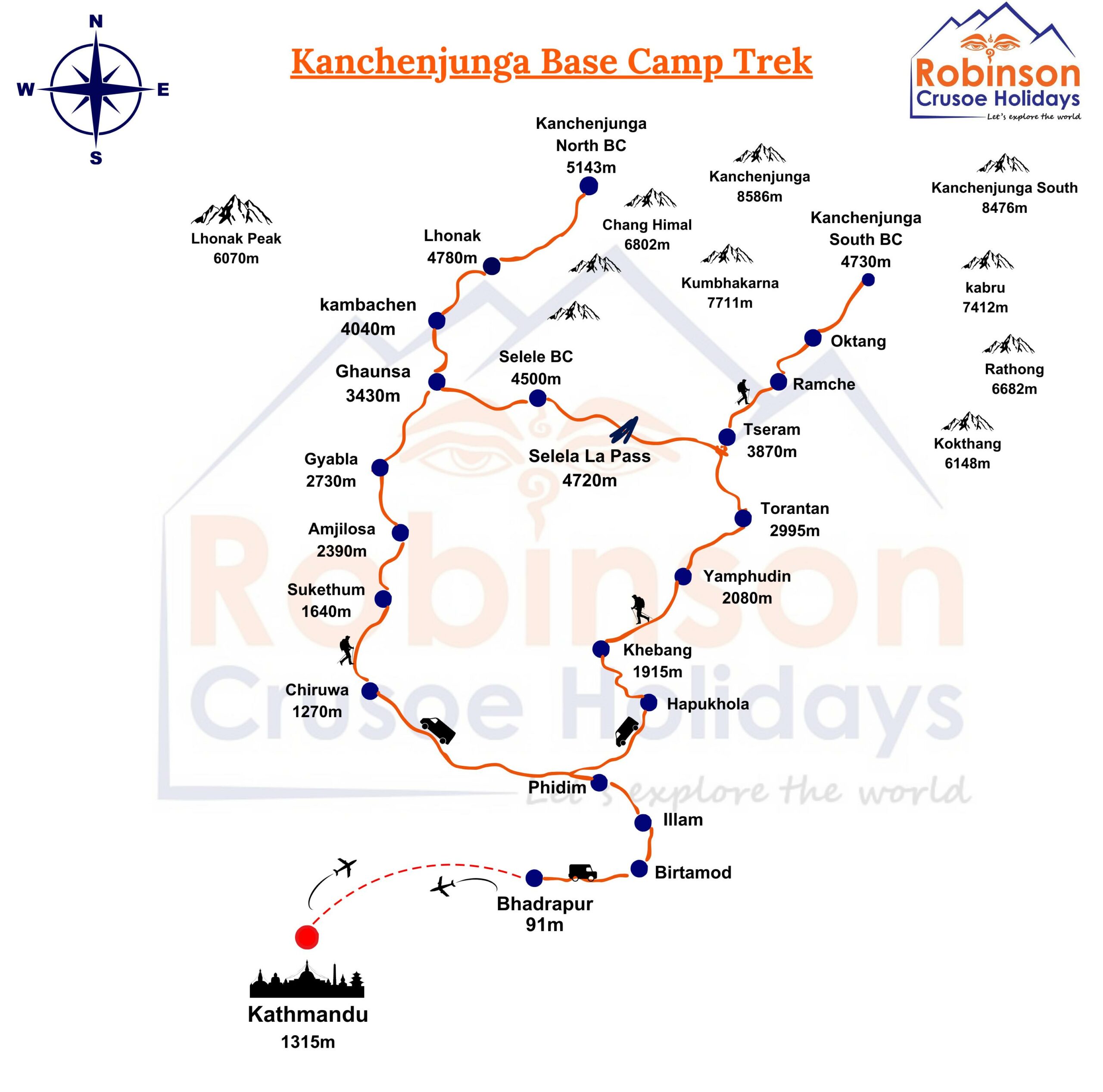
Kanchenjunga Base Camp Nango Pass Trek
A challenging trek through less-traveled paths. Requires both TIMS and a restricted area permit.
Lumba Sumba Pass Trek
A remote trek through varied landscapes, requiring TIMS and a restricted area permit.
Makalu Barun Area
The Makalu Barun Area, located in eastern Nepal, is a remote and pristine trekking destination renowned for its stunning natural beauty. Nestled between the Makalu and Barun glaciers, this region is part of the Makalu Barun National Park and Conservation Area, which spans over 2,300 square kilometers. It boasts the fifth-highest peak in the world, Makalu (8,485 meters), and is home to diverse landscapes, from lush subtropical forests and alpine meadows to rugged high-altitude terrains.
The trekking route in the Makalu Barun Area offers an immersive experience of the rich biodiversity and varied ecosystems of the Himalayas. Trekkers can explore dramatic valleys, encounter rare wildlife like the red panda and snow leopard, and marvel at spectacular mountain vistas. The trail also passes through traditional villages inhabited by the Sherpa and Rai communities, providing a cultural touchstone amid the natural splendor.
Despite its beauty, the Makalu Barun Area remains less crowded compared to other trekking destinations, making it ideal for those seeking solitude and a deep connection with nature. The trek usually spans about 3 to 4 weeks, offering an unforgettable adventure through one of Nepal’s most remote and enchanting landscapes.
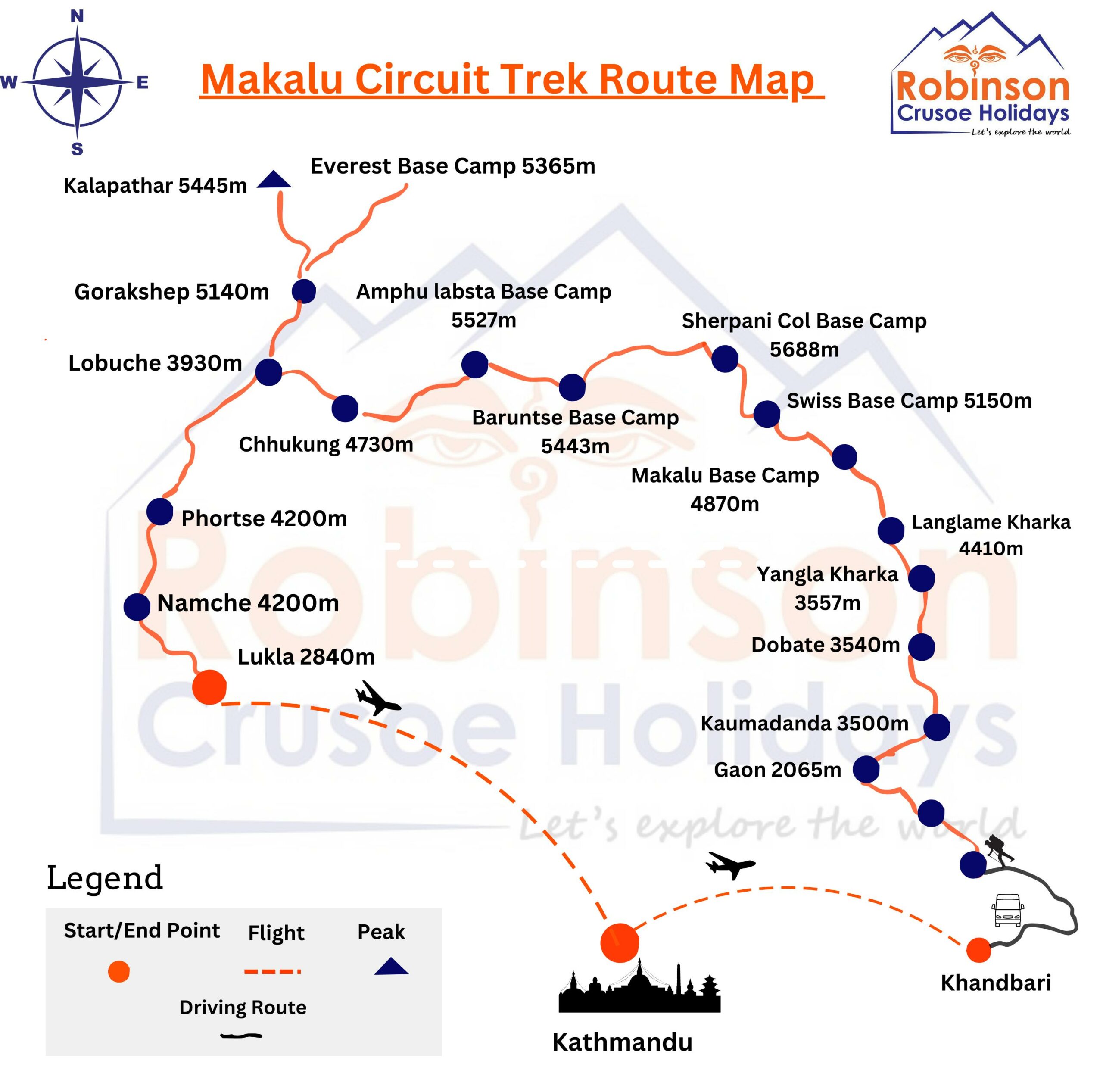
Makalu Basecamp Trek
Takes you to the base of Mount Makalu, the world’s fifth-highest peak. Requires TIMS and a Makalu Barun National Park entry permit.
Sherpeni Cole Pass Trek
A strenuous trek crossing high passes, requires TIMS, a Makalu Barun National Park entry permit, and a restricted area permit.
Major Trekking Regions in Nepal/Everest Region
The Everest Region, located in the eastern part of Nepal, is renowned for its breathtaking landscapes and iconic peaks, including the world’s highest summit, Mount Everest. This area offers some of the most spectacular trekking routes, with the Everest Base Camp trek being the most popular. The trek usually begins from Lukla, a small mountain town accessible by a thrilling flight from Kathmandu.
The route takes trekkers through lush rhododendron forests, quaint Sherpa villages, and ancient monasteries, with stunning views of towering peaks such as Lhotse, Nuptse, and Makalu. The highlight is reaching Everest Base Camp, where you can marvel at the grandeur of the world’s highest peak up close.
Other notable treks in the region include the Gokyo Lakes trek, which offers a chance to explore turquoise glacial lakes and panoramic mountain vistas, and the Three Passes trek, a more challenging route that crosses three high-altitude passes: Kongma La, Cho La, and Renjo La.
The Everest Region is a haven for adventure enthusiasts, offering a blend of natural beauty, cultural richness, and an unforgettable trekking experience.
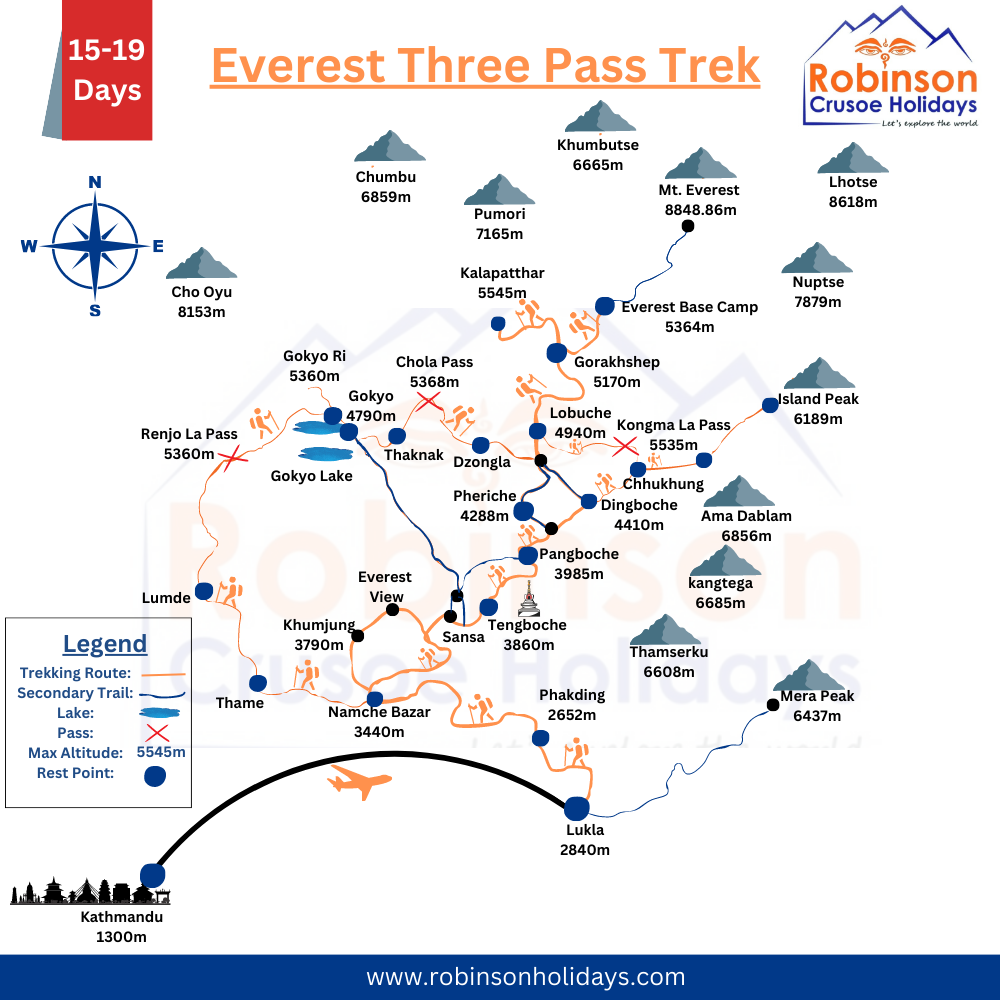
Everest Basecamp Trek
A popular trek to the base of Mount Everest. Requires a TIMS card and Sagarmatha National Park entry permit.
Gokyo Trek
Leads to the stunning Gokyo Lakes. Requires TIMS and Sagarmatha National Park entry permit.
Chho La Pass Trek
Combines Everest Basecamp and Gokyo Lakes treks, requiring TIMS and Sagarmatha National Park entry permit.
Gokyo Renjo La Pass Trek
Crosses Renjo La Pass with views of Everest and other peaks. Requires TIMS and Sagarmatha National Park entry permit.
Three Passes Trek
Covers the Everest Base Camp, Gokyo Lakes, and three high passes. Requires TIMS and Sagarmatha National Park entry permit.
Everest View Trek
A shorter trek with views of Everest, requiring TIMS and Sagarmatha National Park entry permit.
Mera Peak Trek
A climbing expedition to Mera Peak. Requires TIMS, a Sagarmatha National Park entry permit, and a climbing permit.
Amphu Labtsha Pass
A challenging trek that crosses the Amphu Labtsha Pass. Requires TIMS, a Sagarmatha National Park entry permit, and a restricted area permit.
Rolwaling Region
The Rolwaling Region, nestled in eastern Nepal, is a hidden gem for trekkers seeking adventure off the beaten path. This remote area offers breathtaking views, rugged landscapes, and rich cultural experiences. The trek typically starts from the village of Barabise and meanders through lush forests, terraced fields, and charming local villages.
One of the highlights of the Rolwaling trek is the dramatic Rolwaling Valley, which is flanked by towering peaks such as Gauri Shankar and Melungtse. The valley is home to diverse flora and fauna, including rare species like the red panda. As you ascend, you’ll encounter ancient monasteries and experience the unique traditions of the local Sherpa and Tamang communities.
A key feature of the trek is the crossing of the Tashi Lapcha Pass, situated at 5,755 meters. This challenging pass offers spectacular views and a true sense of accomplishment. Trekkers will also have the chance to explore the serene Beding and Na villages, which provide an authentic glimpse into traditional Himalayan life.
Overall, the Rolwaling Region promises an unforgettable trekking experience with its combination of natural beauty, cultural richness, and adventure.
Rolwaling Trek
A trek through remote Rolwaling Valley. Requires TIMS and a Gaurishankar Conservation Area permit.
Tashi Labtsha Pass Trek
Crosses the Tashi Labtsha Pass. Requires TIMS, a Gaurishankar Conservation Area permit, and a restricted area permit.
Panchpokhari Trek
The Panchpokhari Trek is a captivating adventure in Nepal, renowned for its scenic beauty and cultural richness. Located in the Langtang region, this trek takes you to the serene Panchpokhari Lakes, nestled at an altitude of about 4,100 meters. The journey begins from the charming town of Chautara, passing through lush forests, terraced fields, and quaint villages that offer a glimpse into traditional Nepali life.
As you ascend, the trek provides breathtaking views of the Jugal Himal range and the surrounding peaks. The trek is known for its pristine landscapes, including alpine meadows and rugged terrain. The highlight is reaching the Panchpokhari Lakes, a sacred site for both Hindu and Buddhist communities, where the five glacial lakes are surrounded by snow-capped mountains and offer a peaceful and spiritual experience.
The trek typically takes about 10-12 days and is considered moderately challenging. It’s ideal for those seeking an off-the-beaten-path experience with a perfect blend of natural beauty and cultural immersion.
This trek to the holy Panchpokhari Lakes requires a TIMS card and a Langtang National Park entry permit.
Helambu Region
The Helambu Region, located in Nepal’s Langtang National Park, offers a stunning and culturally rich trekking experience. This relatively short trek, often taking 7-10 days, is ideal for those seeking a blend of natural beauty and cultural immersion. The route passes through picturesque villages, lush forests, and terraced fields, with breathtaking views of the Himalayas, including peaks like Langtang Lirung and Ganesh Himal.
The trek begins from Sundarijal, a short drive from Kathmandu, and leads through charming Sherpa and Tamang villages such as Melamchi Gaon and Tarkeghyang. The Helambu Region is renowned for its vibrant culture and traditional lifestyle, with opportunities to visit ancient monasteries and experience local customs.
The trail features diverse landscapes, from subtropical forests to alpine meadows, and offers a relatively moderate challenge, making it accessible for trekkers of various skill levels. The area is less crowded compared to other popular trekking routes, providing a serene and peaceful environment. The Helambu Trek is an excellent choice for those looking to explore Nepal’s natural beauty and cultural heritage in a shorter timeframe.
Helambu Trek
A short trek through Sherpa villages. Requires a TIMS card and a Langtang National Park entry permit.
Gosaikunda Trek
This leads to the sacred Gosaikunda Lake, requiring a TIMS and Langtang National Park entry permit.
Langtang Region
The Langtang Region, nestled in the Himalayas of Nepal, offers a captivating trekking experience characterized by stunning natural beauty and rich cultural encounters. Located north of Kathmandu, the Langtang Valley is renowned for its breathtaking landscapes, including lush forests, terraced fields, and towering snow-capped peaks. The trek typically starts from the town of Syabrubesi, ascending through diverse terrain to the heart of the valley.
One of the highlights of the Langtang trek is the Langtang National Park, home to diverse flora and fauna such as red pandas, Himalayan tahr, and various bird species. The trail also leads through charming Tamang villages, where trekkers can experience local traditions and hospitality. The journey culminates at Kyanjin Gompa, a serene Buddhist monastery surrounded by dramatic mountain vistas, including the imposing Langtang Lirung peak.
The region offers a relatively accessible trekking route, making it ideal for those seeking an immersive Himalayan adventure without the crowds. With its blend of natural splendor and cultural richness, the Langtang Region is a must-visit for trekking enthusiasts and nature lovers alike.
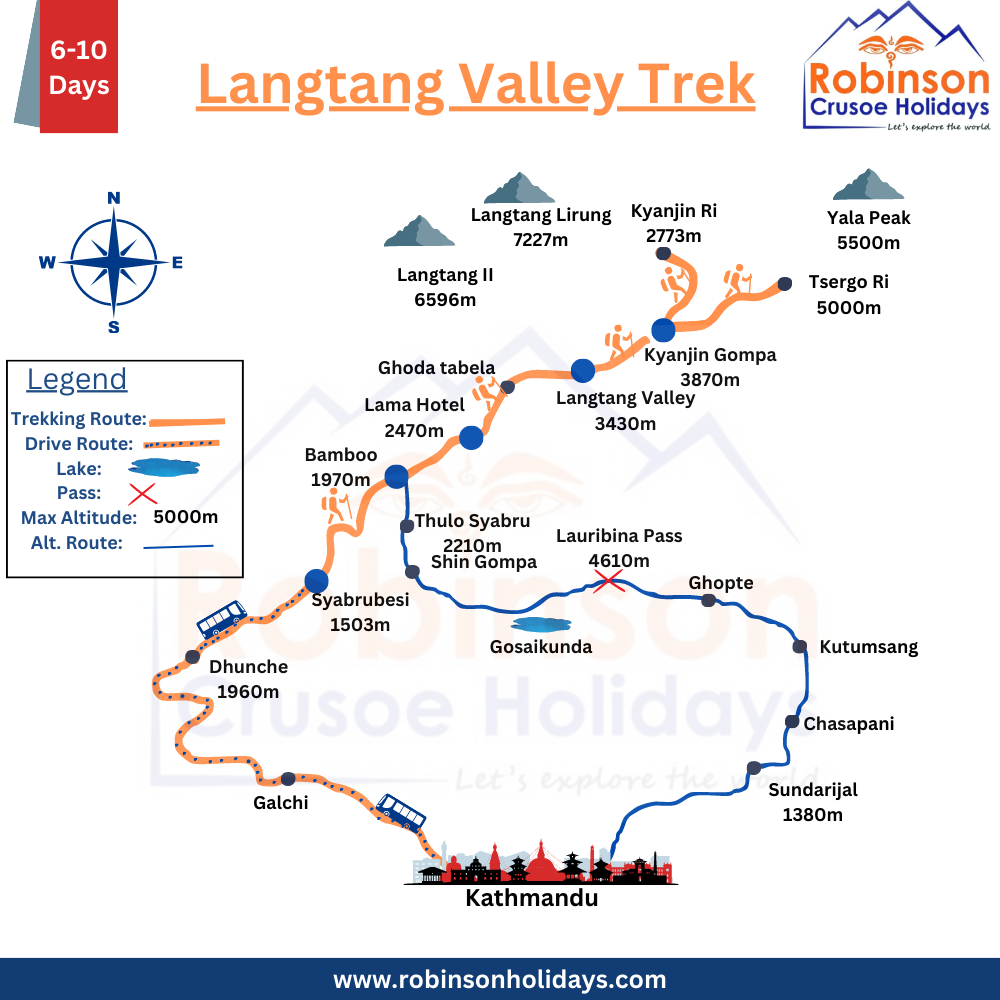
Langtang Trek
A popular trek in Langtang Valley. Requires TIMS and Langtang National Park entry permit.
Langtang Gosaikund Trek
Combines Langtang Valley and Gosaikund Lake treks. Requires TIMS and Langtang National Park entry permit.
Tamang Heritage Trek
A cultural trek through Tamang villages. Requires TIMS and Langtang National Park entry permit.
Tamang Heritage Langtang Trek
A combined trek of Tamang Heritage and Langtang Valley. Requires TIMS and Langtang National Park entry permit.
Ganja La Pass Trek
A challenging trek crossing Ganja La Pass. Requires TIMS, Langtang National Park entry permit, and a restricted area permit.
Till Man Pass
A high-altitude trek requiring TIMS, a Langtang National Park entry permit, and a restricted area permit.
Ganesh Himal-Ruby Valley Area
The Ganesh Himal-Ruby Valley Area is a captivating trekking destination located in Nepal’s central region, offering a blend of stunning natural beauty and rich cultural experiences. This route is renowned for its breathtaking views of the Ganesh Himal and Langtang ranges, with peaks soaring over 7,000 meters. The trek begins from the bustling town of Dhading, moving through charming villages like Syabrubesi and Gomba, where trekkers can experience the traditional lifestyles of local Tamang and Gurung communities.
The Ruby Valley Area is characterized by lush terraced fields, dense forests, and serene alpine meadows. The trail ascends gradually through the beautiful landscapes, leading trekkers to the captivating Ruby Valley, named for its precious gemstone deposits. Highlights include the vibrant rhododendron forests, pristine rivers, and panoramic mountain vistas.
Trekkers can also enjoy cultural encounters with the local communities, visit ancient monasteries, and witness traditional festivals if their timing aligns. The Ganesh Himal-Ruby Valley trek offers a less frequented path compared to other popular routes, providing a more intimate and serene trekking experience in the Himalayas.
Ganesh Himal – Ruby Valley Trek
A less-trodden route through Ruby Valley. Requires a TIMS card and a restricted area permit.
Manaslu Region
The Manaslu Region, located in the western Himalayas of Nepal, offers a spectacular trekking experience with its pristine beauty and rich cultural heritage. The highlight of this region is the Manaslu Circuit Trek, a classic adventure that encircles Mount Manaslu (8,163 meters), the eighth-highest peak in the world. This trek is renowned for its diverse landscapes, ranging from lush forests and terraced fields to rugged mountain terrain and high-altitude deserts.
The journey begins in the town of Soti Khola and winds through traditional Gurung and Tibetan-influenced villages, where trekkers can immerse themselves in local culture and experience the warm hospitality of the mountain communities. As you ascend, you’ll cross the Larkya La Pass (5,160 meters), offering breathtaking panoramic views of the surrounding peaks and glaciers.
The Manaslu Region is less crowded compared to other popular treks like Annapurna and Everest, making it a perfect choice for those seeking solitude and a deeper connection with nature. With its stunning scenery, diverse wildlife, and rich cultural encounters, the Manaslu Circuit Trek promises an unforgettable adventure in the heart of the Himalayas.
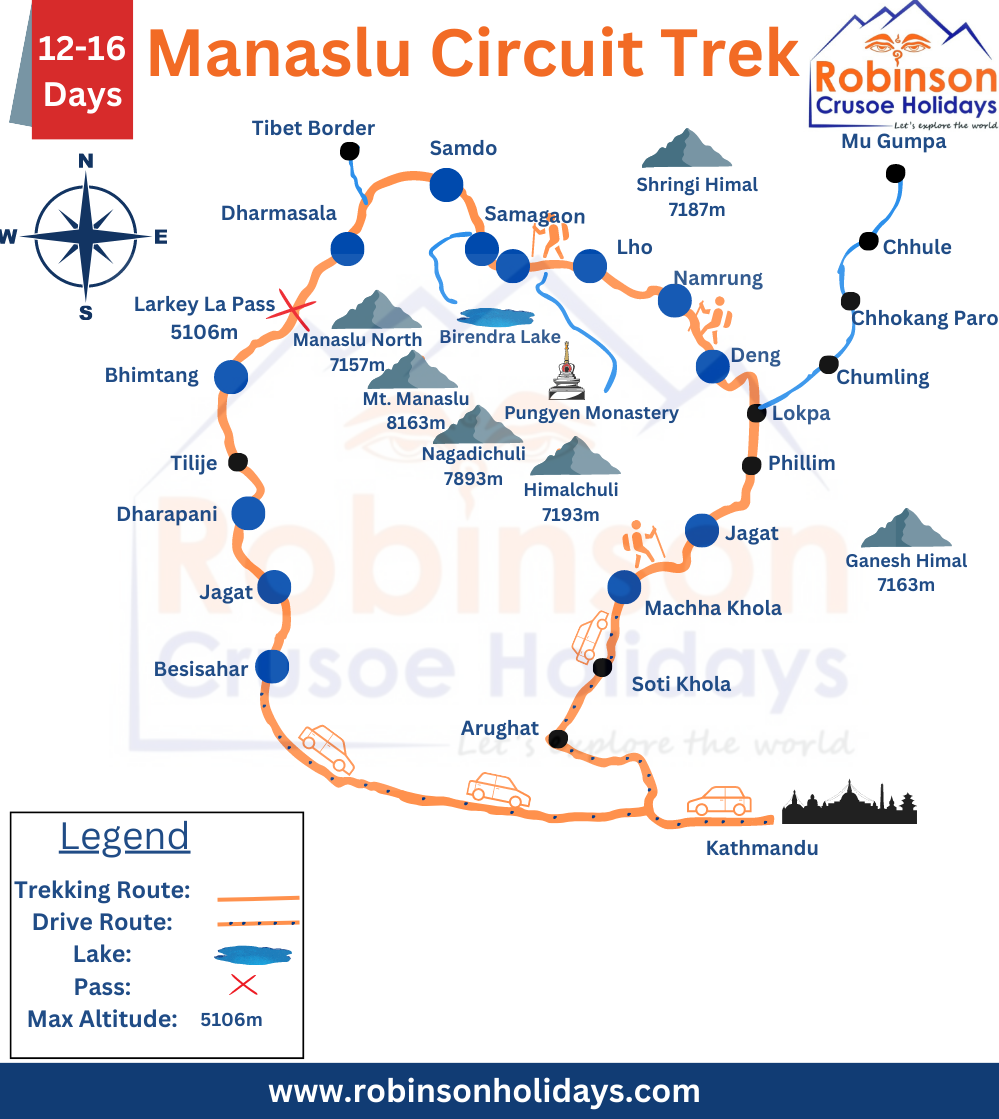
Manaslu Circuit Trek/Major Trekking Regions in Nepal
Circles Mount Manaslu, the world’s eighth-highest peak. Requires TIMS, a Manaslu Conservation Area permit, and a restricted area permit.
Manaslu – Tsum Valley Trek
Combines the Manaslu Circuit with Tsum Valley. Requires TIMS, Manaslu Conservation Area, and Tsum Valley restricted area permits.
Tsum Valley Trek
A trek to the sacred Tsum Valley. Requires TIMS and a restricted area permit.
Annapurna Region
The Annapurna Region, one of Nepal’s most popular trekking destinations, offers breathtaking landscapes, diverse ecosystems, and cultural richness. Located in the north-central part of Nepal, the region is home to the Annapurna Massif, which includes Annapurna I, the 10th highest mountain in the world at 8,091 meters.
Trekkers can choose from several routes, including the Annapurna Circuit, Annapurna Base Camp (ABC), and Ghorepani Poon Hill trek. The Annapurna Circuit is a classic trek that circles the massif, passing through subtropical forests, alpine meadows, and high-altitude deserts, with the Thorong La Pass (5,416 meters) being a highlight. The ABC trek takes you to the heart of the range, offering close-up views of Annapurna I and Machapuchare. The shorter Ghorepani Poon Hill trek is known for its stunning sunrise views over the Himalayas.
The region is dotted with charming villages, such as Manang, Ghandruk, and Jomsom, inhabited by diverse ethnic communities like Gurungs and Thakalis. The Annapurna Conservation Area, Nepal’s largest protected area, offers a range of flora and fauna, including rhododendron forests and endangered species. With its mix of natural beauty, cultural experiences, and well-established trekking infrastructure, the Annapurna Region is a must-visit for trekkers of all levels.
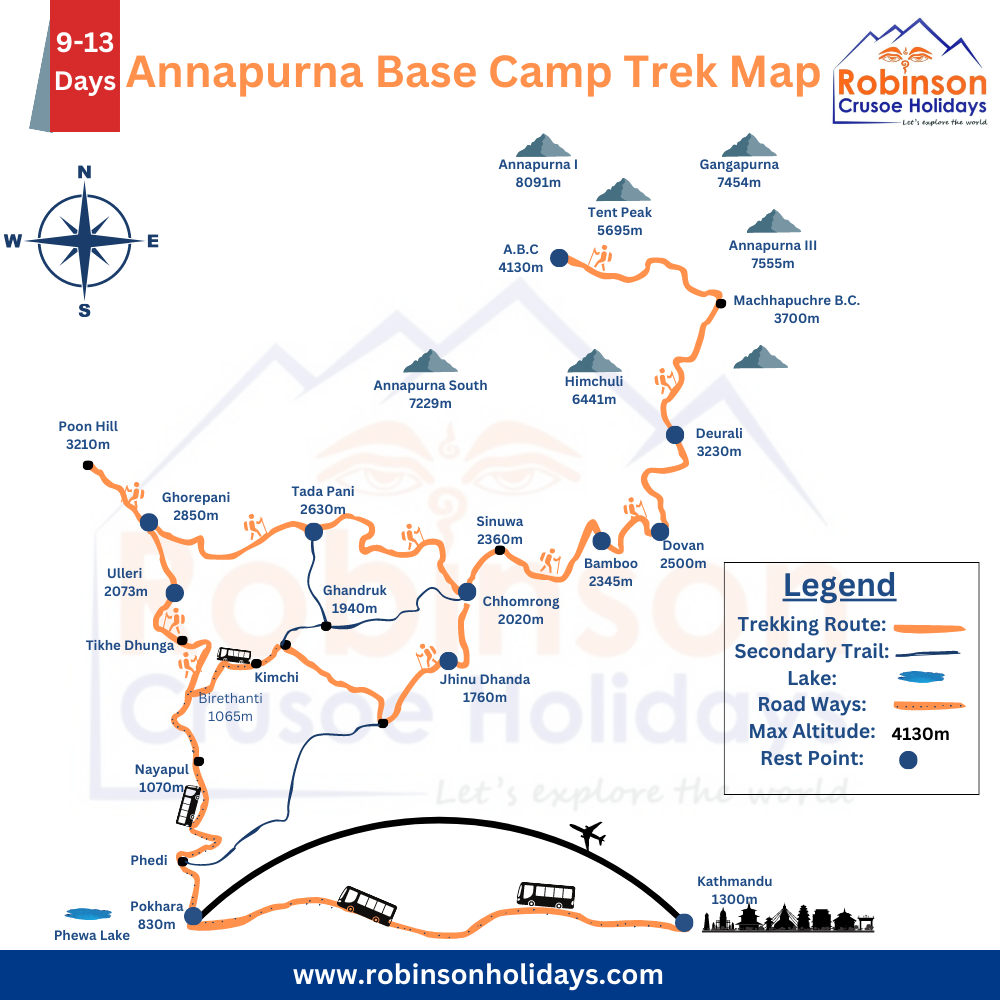
Annapurna Circuit Trek
A classic trek around the Annapurna range. Requires a TIMS card and Annapurna Conservation Area Permit (ACAP).
Nar Phu Annapurna Circuit Trek
Combines Annapurna Circuit with Nar Phu Valley. Requires TIMS, ACAP, and a restricted area permit.
Mesokanto / Tilicho Pass Trek
A trek to Tilicho Lake, one of the highest lakes in the world. Requires TIMS and ACAP.
Poon Hill-ABC Trek
A popular trek to Poon Hill and Annapurna Base Camp. Requires TIMS and ACAP.
Khopra Trek
A scenic alternative to the main Annapurna routes. Requires TIMS and ACAP.
Mardi Himal Trek
A short and relatively easy trek. Requires TIMS and ACAP.
Siklesh Tara Hill Trek
A cultural trek to Siklesh village. Requires TIMS and ACAP.
Mustang Region
The Mustang region, often called the “Last Forbidden Kingdom,” offers a unique trekking experience in Nepal, combining natural beauty with rich cultural heritage. Located in the north-central part of Nepal, Mustang is divided into Upper and Lower Mustang. The region is known for its stark desert-like landscapes, deep valleys, and dramatic views of the Annapurna and Dhaulagiri ranges. Trekkers can explore ancient monasteries, traditional Tibetan-style villages, and the walled city of Lo Manthang, the ancient capital of the Kingdom of Lo.
The trek usually begins from Jomsom, accessible by a short flight from Pokhara, and follows the Kali Gandaki River. The journey offers a chance to experience the unique culture of the local Thakali and Tibetan-influenced communities. Mustang’s trekking routes are open year-round, but the best time to visit is from March to November, avoiding the monsoon. Unlike other regions in Nepal, Mustang remains relatively dry during the summer due to its location in the rain shadow of the Himalayas.
With a mix of adventure and culture, trekking in the Mustang region provides an unforgettable experience for those seeking to explore one of Nepal’s most remote and mystical areas.
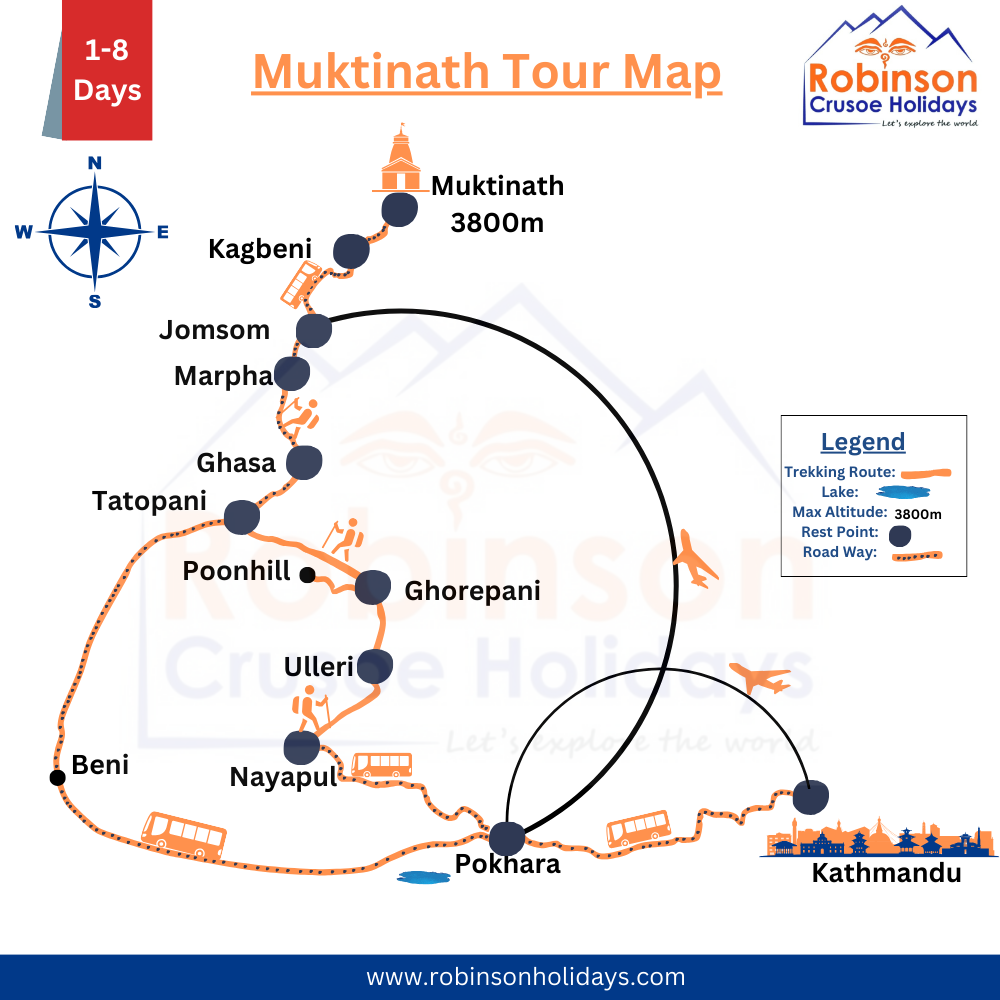
Upper Mustang Trek
This takes you to the ancient kingdom of Mustang. Requires a TIMS card and a restricted area permit.
Sarebung Pass Trek
It is a remote trek that requires TIMS, an Upper Mustang restricted area, and a special climbing permit.
Dhaulagiri Region
The Dhaulagiri Region, named after Mount Dhaulagiri (8,167 meters), the world’s seventh-highest peak, offers Nepal’s challenging yet rewarding trekking experience. Located in the western part of the country, this remote region provides a sense of adventure with its rugged terrain, pristine landscapes, and panoramic mountain views. The Dhaulagiri Circuit Trek, the most popular in the area, takes trekkers through dense forests, traditional villages, and high-altitude passes, including the French Pass (5,360 meters) and Dhampus Pass (5,250 meters).
This trek is known for its off-the-beaten-path experience, away from the crowds of other popular trails in Nepal. The region’s diverse flora and fauna, including rhododendron forests and rare wildlife like the snow leopard, add to the allure. Trekkers also get the chance to explore local culture, particularly the lifestyle of the indigenous Magar and Thakali communities.
Due to its challenging nature, including glacier crossings and high-altitude conditions, the Dhaulagiri Region trek is best suited for experienced trekkers. The best time to visit is spring (March to May) and autumn (September to November) when the weather is stable, and the mountain views are spectacular.
Round Dhaulagiri
A challenging trek around Mount Dhaulagiri, requires TIMS, Annapurna Conservation Area Permit (ACAP), and a restricted area permit.
Dolpo Region
The Dolpo Region, located in Nepal’s remote northwest, is one of the country’s most isolated and culturally rich trekking destinations. Nestled within the Shey Phoksundo National Park, Dolpo offers a unique blend of Tibetan-influenced culture, breathtaking landscapes, and high-altitude adventures.
Trekkers can explore ancient villages, crystal-clear turquoise lakes like Shey Phoksundo, and dramatic mountain passes over 5,000 meters. The region is known for its stark, barren beauty, where the arid, windswept landscapes are punctuated by snow-capped peaks and deep gorges. Along the way, trekkers might encounter rare wildlife such as the elusive snow leopard, blue sheep, and Himalayan marmots.
Culturally, Dolpo is home to the Bon and Tibetan Buddhist communities, where time-honored traditions, monasteries, and prayer flags dot the landscape. Treks in this region, like the Upper Dolpo Circuit, are challenging and remote, often requiring camping and extended trekking days due to the limited infrastructure.
Perfect for those seeking solitude, adventure, and a glimpse into a way of life untouched by modernity, the Dolpo Region remains one of Nepal’s most mystical and least explored trekking routes.
Upper Dolpo – Jomsom Trek
A remote trek requiring TIMS, Shey Phoksundo National Park entry permit, and a restricted area permit.
Upper Dolpo Trek
A long and challenging trek in the isolated region of Dolpo. Requires TIMS, Shey Phoksundo National Park entry permit, and a restricted area permit.
Lower Dolpo Trek
A trek to the lower region of Dolpo. Requires TIMS, Shey Phoksundo National Park entry permit, and a restricted area permit.
Kagmara Pass Trek
A trek crossing Kagmara Pass. Requires TIMS, Shey Phoksundo National Park entry permit, and a restricted area permit.
Humla Region
The Humla Region, located in Nepal’s remote northwest, offers an off-the-beaten-path trekking experience unlike any other. Known for its unspoiled landscapes, this region is home to breathtaking Himalayan views, secluded valleys, and ancient Tibetan culture. Trekkers in Humla pass through high-altitude terrains, lush forests, alpine meadows, and charming villages like Simikot, which is the gateway to the region.
A major highlight of trekking in Humla is the journey to Limi Valley, where travelers encounter Buddhist monasteries, chortens, and prayer flags that narrate the spiritual essence of this area. The trek also leads to the border of Tibet, offering panoramic views of Mount Kailash and Lake Manasarovar, sacred sites for Hindus and Buddhists alike.
Due to its remoteness, the Humla Region is less frequented by tourists, ensuring an authentic and peaceful trekking experience. The region is accessible via a flight to Simikot from Nepalgunj. Trekkers should be prepared for basic amenities, as the area lacks extensive tourist infrastructure. With its unique blend of culture, spirituality, and natural beauty, Humla remains a hidden gem for adventurous travelers seeking solitude in the Himalayas.
Humla Limi Valley Trek
A trek in the remote northwest region of Nepal. Requires TIMS, a restricted area permit, and a Humla special permit.
